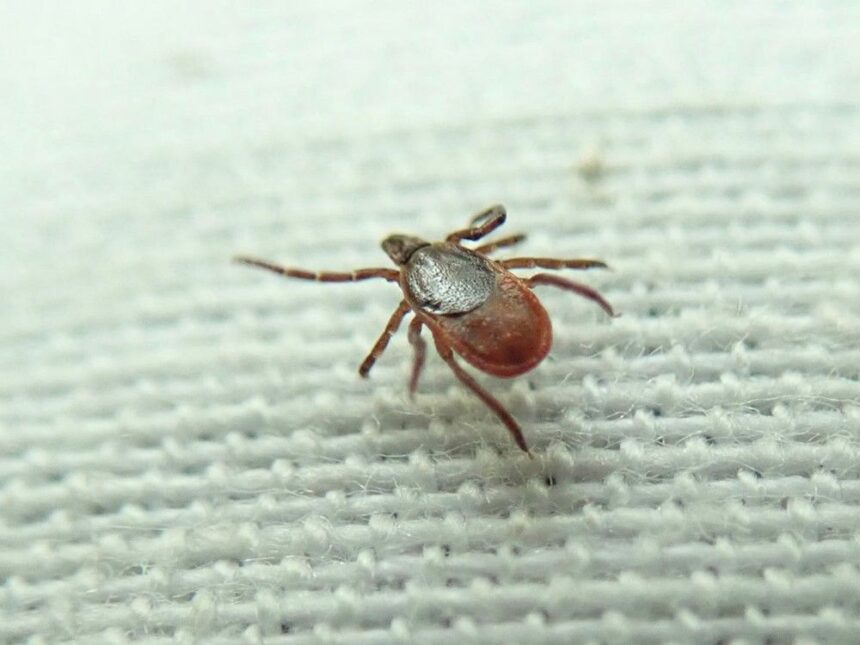In 2024, P.E.I. had two lab-confirmed cases and two probable cases of Lyme disease diagnosed. Nationally in 2023, there were 4,785 cases of Lyme disease reported. Preliminary results for 2024 show 5,239 cases reported across the country. Photo by File /PostmediaArticle contentWith plenty of places for ticks to live in P.E.I., there is a risk of people encountering them while outdoors.THIS CONTENT IS RESERVED FOR SUBSCRIBERS ONLY.Subscribe now to access this story and more:Unlimited access to the website and appExclusive access to premium content, newsletters and podcastsFull access to the e-Edition app, an electronic replica of the print edition that you can share, download and comment onEnjoy insights and behind-the-scenes analysis from our award-winning journalistsSupport local journalists and the next generation of journalistsSUBSCRIBE TO UNLOCK MORE ARTICLES.Subscribe or sign in to your account to continue your reading experience.Unlimited access to the website and appExclusive access to premium content, newsletters and podcastsFull access to the e-Edition app, an electronic replica of the print edition that you can share, download and comment onEnjoy insights and behind-the-scenes analysis from our award-winning journalistsSupport local journalists and the next generation of journalistsRegister to unlock more articles.Create an account or sign in to continue your reading experience.Access additional stories every monthShare your thoughts and join the conversation in our commenting communityGet email updates from your favourite authorsSign In or Create an AccountorArticle contentIn a recent statement to The Guardian, the Department of Health and Wellness provided details on how ticks impact the general population in P.E.I.Article contentArticle contentWhile P.E.I. is considered a low-risk area for Lyme disease, it is still essential for people to take preventive measures such as wearing protective clothing and using insect repellent, said the statement.Article contentArticle contentMonitoring and preventionArticle contentIn P.E.I., the eTick surveillance platform is being used to monitor the presence of ticks across the province. The platform accepts photos of ticks and returns information on the tick’s identity.Article contentIf someone gets a tick on them, the department says it should be removed promptly, as the infection risk is low if removed within 24-36 hours of the occurrence.Article content“Symptoms to watch for include fever, fatigue and or bullseye rash. In such cases or if unsure, one should consult a health-care provider,” read the statement.Article contentNot all ticks carry diseases, and only certain types of ticks can transmit certain illnesses, such as Lyme disease.Article contentIxodes scapularis, commonly known as the blacklegged tick, is known to transmit Lyme disease in P.E.I.Article contentAlong with Lyme disease, the blacklegged tick can transmit several rare but potentially more life-threatening zoonotic pathogens to humans or animals.Article contentArticle contentSuch pathogens include Anaplasma phagocytophilum, the bacterial causal agent of human granulocytic anaplasmosis, Babesia microti the protozoan causal agent of human babesiosis and Powassan encephalitis virus, read the statement.Article contentArticle contentP.E.I. monitors these diseases, and there have not been any reported cases in recent years, according to the Department of Health and Wellness.Article contentStatisticsArticle contentIn 2024, P.E.I. had two lab-confirmed cases and two probable cases of Lyme disease diagnosed.Article content“The five-year average incident rate was 3.1 cases per 100,000 population, which is similar to the rate reported in 2023, at 3.4 cases per 100,000,” read the statement.Article contentIn comparison, the incidence of Lyme disease is much higher in other regions in the Maritimes.Article contentAccording to the department, in 2023, Nova Scotia reported the highest rate of Lyme disease in the country at 194.3 cases per 100,000 population. That same year, New Brunswick reported 12.1 cases per 100,000 population.
State of ticks in P.E.I.











